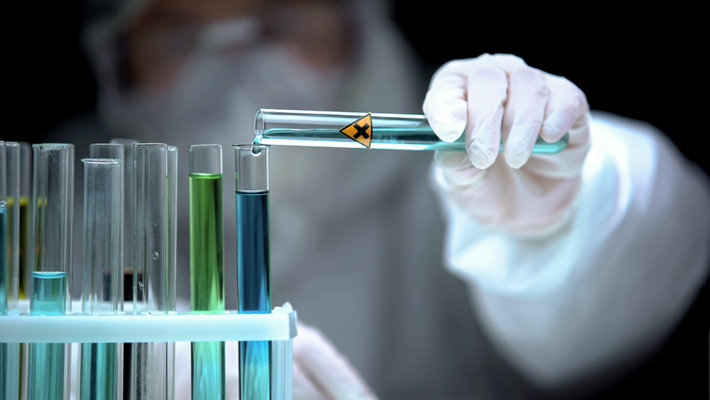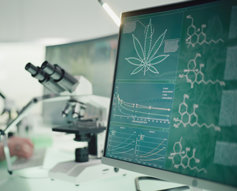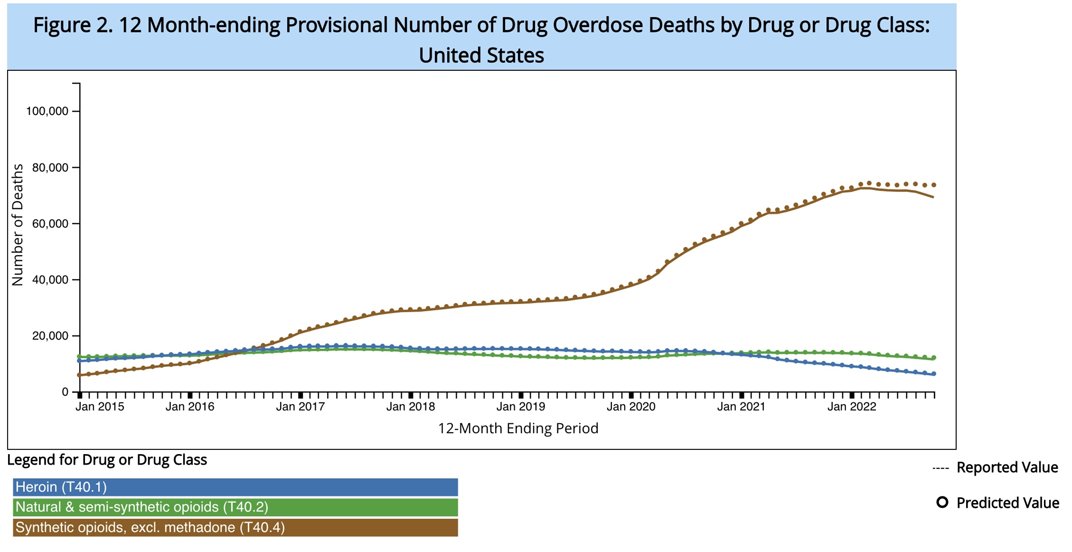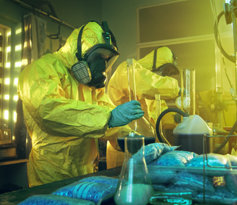The Terrifying Escalation of Drug Dangers in America

The world of drug abuse today is nothing like that of the parents and grandparents of today’s youth. The dangers have become far more intense and the threat of harm and death are greatly magnified from what these parents and grandparents experienced.
That’s simply because of this fact: The drugs themselves are a far cry from the drugs used just a generation or two ago. At that time, most of the drugs on the illicit or legal markets were derived from plants. Heroin, cocaine, marijuana and alcohol were available just about anywhere in the country. They were addictive and all of them but marijuana could cause death if too much was consumed at one time. But they don’t compare to the drugs readily available today in every corner of the U.S.
Today’s Potent Commercialized or Synthetic Drugs
Many of the drugs on the illicit market now are nothing more than toxic chemicals synthesized in far-off, illicit labs run by criminals. For example, one of these synthetics is thousands of times more potent than heroin. It’s no wonder that overdose deaths have climbed so drastically.

Even the marijuana products sold by medical and retail marijuana businesses are vastly more powerful than anything today’s parents or grandparents consumed. That shift has happened because the cannabis industry has been commercialized, meaning that businessmen participating in this industry are intent on making as much profit as possible.
This escalation of the potency of these drugs means that they are far more addictive and dangerous than ever before. They have far greater power to derail the minds and lives of Americans than any drugs that preceded them.
Comparing Past Drugs with Today’s Drugs
Check out these comparisons of drugs in the past with those of today.
- Marijuana: Marijuana in 1980 had a potency ranging around 2% to 3% THC. THC is short for delta-9-tetrahydrocannabinol, the primary, sought-after intoxicant in marijuana. Between 1995 and 2017, the average THC content of marijuana increased 300% or more. As of 2017, it was common to find marijuana in retail stores that averaged 17% to 28% THC or even higher. Concentrated THC products can have a potency as high as 95%. According to the National Institute on Drug Abuse, the higher the potency, the greater the risk of addiction.
- Synthetic Marijuana: Synthetic marijuana (also called Spice or K2) is one of those toxic chemicals synthesized in illicit labs. It’s sold with the claim that it will have similar effects to marijuana. Instead, users discover that it causes symptoms like impaired perception, racing heart, vomiting, loss of motor control, disorientation, extreme paranoia, hallucinations, violent behavior and psychosis. Overdoses can result in kidney damage and seizures.
- Methamphetamine: For many years, methamphetamine was produced domestically in small illicit labs. Now it is being produced in large labs in foreign countries and the resulting product is far more potent. This new methamphetamine has more severe mental and emotional effects and is more severely addictive. This new meth has spread across the country and its effects are impacting services for the mentally ill and homeless, stressing local and state budgets everywhere.
- Other Synthetic Stimulants: Old stimulants like prescription amphetamine or ecstasy have given way to unpredictable new psychoactive synthetics like bath salts and other synthetics in a group called cathinones. These new drugs have been associated with adverse effects such as high addiction potential, severe intoxications linked to cardiac, metabolic, neuropsychiatric and neurological complications and an increasing number of fatalities.
A Special Look at Fentanyl
Of course, on this subject, the elephant in the room is fentanyl. While heroin was bad enough, fentanyl is vastly worse. Just before this most recent wave of fentanyl began to hit America in 2013, heroin overdose deaths hovered around 4 deaths per 100,000 population. Then foreign labs discovered the high quantities of money that could be made from smuggling the synthetic drug fentanyl into the country.

In the following chart, you can see what happened to our overdose losses. Heroin deaths have actually gone down. Prescription opioid overdoses had been stable or decreasing for years. But fentanyl deaths increased more than twelve-fold between January 2015 to October 2022. This increase was due to increased production and trafficking of this drug. Gradually, fentanyl began to be added to heroin, fake prescription pills, methamphetamine and cocaine. The farther it spread and the more places it appeared, the more people died.
- January 2105 fentanyl deaths in the prior 12 months: 5,862
- October 2022 fentanyl deaths in the prior 12 months: 73,570
A person who has been using heroin or prescription opioids for years may be accustomed to the typical potency of the drugs they can get their hands on. But fentanyl is ten to 20 times more potent than heroin. It is 50 to 100 times more potent than morphine.
Another important fact is this: Fentanyl comes in dozens of different formulas. The molecular structure of these chemical analogues (chemically-similar drugs) may only vary in the slightest degree, but these small changes can alter the potency and deadly effect greatly. One of these analogues, carfentanil, is 2,000 to 20,000 times more potent than heroin. In 2016 and 2017, carfentanil killed more than 1,100 people in Florida alone.
Even if we could remove fentanyl from the market, law enforcement personnel making drug seizures are finding increasing supplies of a new type of synthetic opioid called a nitazene that is similarly potent to fentanyl.
While we must make the effort to remove these drugs from the market, it is also essential to help those who are addicted to recover their sobriety and prevent young people from ever starting to use drugs.
Why Are We Seeing These More Potent Drugs?

This greater potency comes from a number of factors:
- Criminal chemists and drug traffickers develop the skill and the labs to create any synthetic they want, with nearly unlimited ability to increase potency. This applies to fentanyl, nitazenes and other synthetic drugs such as the many different types of cathinones.
- Overseas chemists then see the potential to rake in billions of dollars. In some countries where these synthetic drugs are being produced, there is little or no oversight of these pharmaceutical companies. They are free to produce their deadly products and work hand-in-hand with drug traffickers who already have established trafficking channels into the U.S.
- In states where marijuana has been legalized for either medical or recreational use, the business of growing and distributing the drug has become commercialized. Suddenly, there are investors who want to get in on the action. Entrepreneurs want to reap the profits available from this new and growing market. Growers respond by increasing the potency of the drug. Businesses that have higher potency products have an advantage over other businesses. This pattern has been repeated state after state.
And so we have an illicit market of drugs that is more dangerous than ever before.
Greater Urgency to Get an Addicted Person to Rehab
Increasing potency means greater addictiveness and more serious effects on the mind, body and spirit. The increasing potency of these drugs and the danger of consuming any of them makes it more vital than ever before to get a person to rehab as soon as possible.
If you care about someone who is using drugs or is addicted, it’s essential to get this person into an effective rehab before these drugs can rob them of everything valuable in their lives.
Sources:
- National Library of Medicine. “The Problem with the Current High Potency THC Marijuana from the Perspective of an Addiction Psychiatrist.” NLM, 2018. NLM
- National Library of Medicine. “Changes in Cannabis Potency over the Last Two Decades (1995–2014) – Analysis of Current Data in the United States.” NLM, 2017. NLM
- National Public Radio. “Highly Potent Weed Has Swept The Market, Raising Concerns About Health Risks.” NPR, 2019. NPR
- Centers for Disease Control and Prevention. “Synthetic cannabinoids: What are they? What are their effects?” CDC, 2022. CDC
- National Institute on Drug Abuse. “What are synthetic cannabinoids?” NIDA, 2020. NIDA
- Oregon Public Broadcasting. “The formulation of meth has changed. It may be contributing to this country’s mental health crisis.” OPB, 2021. OPB
- Oregon Public Broadcasting. “Meth has changed, and it’s sabotaging Oregon’s mental health system.” OPB. 2022. OPB
- National Institute on Drug Abuse. “What are synthetic cathinones?” NIDA, 2020. NIDA
- CDC. “Opioid Data Analysis and Resources.” CDC, 2022. CDC
- Centers for Disease Control and Prevention. “Provisional Drug Overdose Death Counts.” CDC, 2023. CDC
- Centers for Disease Control and Prevention. “Carfentanil Outbreak – Florida, 2016–2017.” CDC, 2020. CDC
- DEA. “New, Dangerous Synthetic Opioid in D.C., Emerging in Tri-State Area.” DEA, 2022. DEA


 ®
®